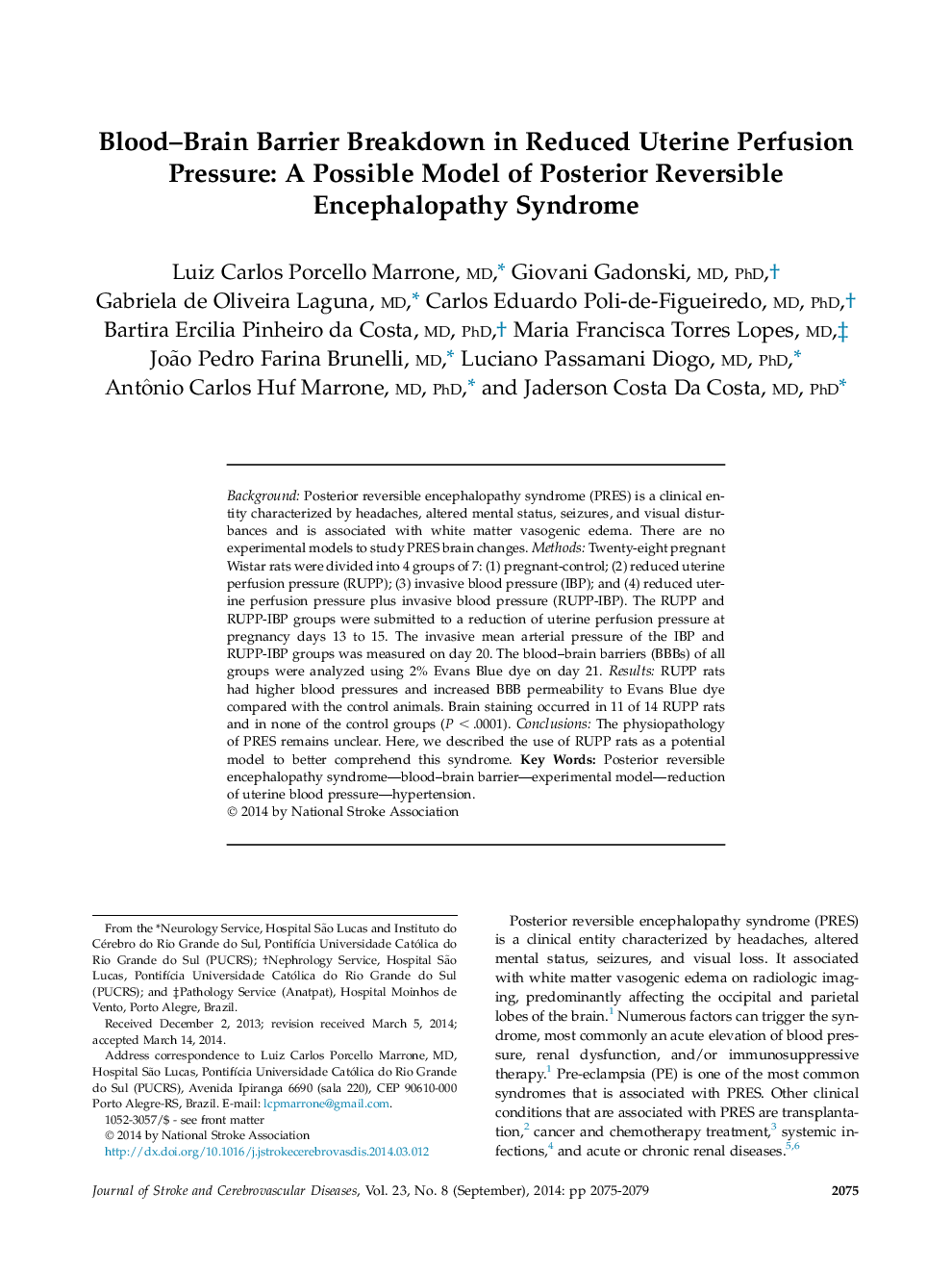| کد مقاله | کد نشریه | سال انتشار | مقاله انگلیسی | نسخه تمام متن |
|---|---|---|---|---|
| 2705999 | 1144790 | 2014 | 5 صفحه PDF | دانلود رایگان |
BackgroundPosterior reversible encephalopathy syndrome (PRES) is a clinical entity characterized by headaches, altered mental status, seizures, and visual disturbances and is associated with white matter vasogenic edema. There are no experimental models to study PRES brain changes.MethodsTwenty-eight pregnant Wistar rats were divided into 4 groups of 7: (1) pregnant-control; (2) reduced uterine perfusion pressure (RUPP); (3) invasive blood pressure (IBP); and (4) reduced uterine perfusion pressure plus invasive blood pressure (RUPP-IBP). The RUPP and RUPP-IBP groups were submitted to a reduction of uterine perfusion pressure at pregnancy days 13 to 15. The invasive mean arterial pressure of the IBP and RUPP-IBP groups was measured on day 20. The blood–brain barriers (BBBs) of all groups were analyzed using 2% Evans Blue dye on day 21.ResultsRUPP rats had higher blood pressures and increased BBB permeability to Evans Blue dye compared with the control animals. Brain staining occurred in 11 of 14 RUPP rats and in none of the control groups (P < .0001).ConclusionsThe physiopathology of PRES remains unclear. Here, we described the use of RUPP rats as a potential model to better comprehend this syndrome.
Journal: Journal of Stroke and Cerebrovascular Diseases - Volume 23, Issue 8, September 2014, Pages 2075–2079
